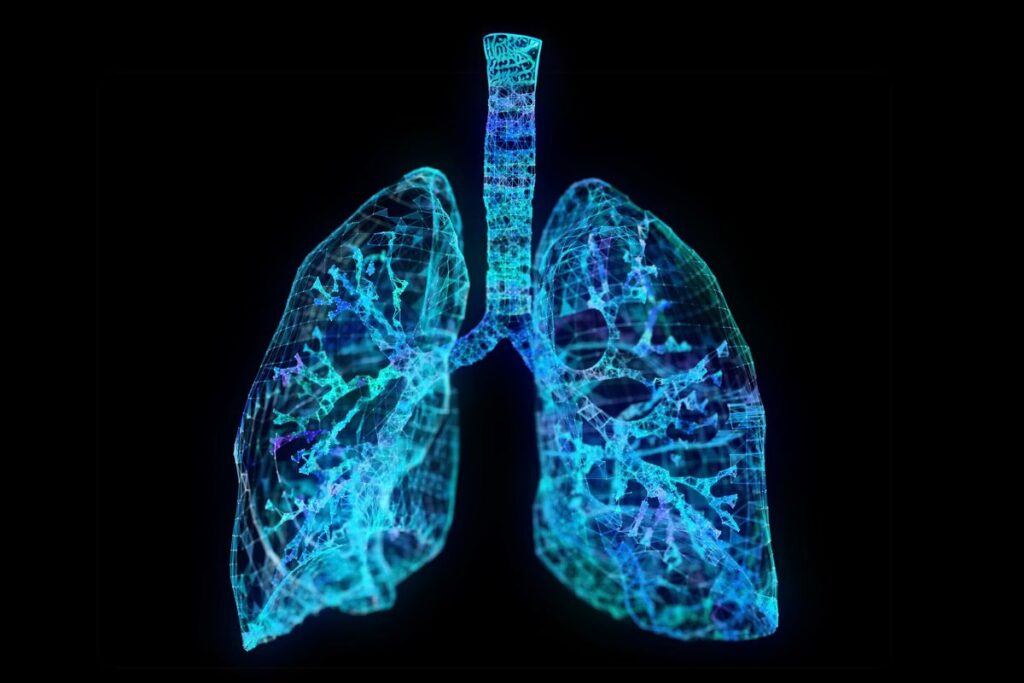“Are you feeling short of breath while walking just a few steps, having a dry cough that doesn’t go away, and feeling tired all the time? These could be signs of Interstitial Lung Disease (ILD).”
What Is Interstitial Lung Disease?
Interstitial Lung Disease (ILD) refers to a group of over 200 lung conditions that cause scarring (fibrosis) of the lung tissue. This scarring makes the lungs stiff and reduces their ability to take in oxygen, leading to progressive breathing difficulties.
Damage and thickening of the interstitium, the tissue that is between the lungs’ air sacs, prevent oxygen from entering the bloodstream.
Symptoms: When Breathing Feels Like a Struggle
The symptoms of ILD differ, but the most common signs include:
● Shortness of breath: Often noticeable during physical activity and progressively worsening over time.
● Dry cough: persistent and non-productive.
● Fatigue: Feeling tired even after minimal exertion.
● Unexplained weight loss: often associated with advanced cases.
● Chest discomfort: A tight or heavy sensation in the chest.
If these symptoms persist, a doctor’s evaluation is crucial.
What Causes ILD?
The exact cause of ILD is often unknown, but some common triggers include:
1. Environmental Exposure:
● Long-term exposure to harmful substances like asbestos, silica dust, or mould.
● Occupational hazards in mining, farming, or construction.
2. Autoimmune Diseases:
● Conditions like rheumatoid arthritis, scleroderma, or lupus can lead to ILD.
3. Medications and Treatments:
● Certain drugs, such as chemotherapy or long-term use of antibiotics, can damage lung tissue.
● Radiation therapy to the chest is another risk.
4. Smoking:
● A significant factor in worsening existing lung damage.
5. Genetics:
● Family history may play a role in some cases.
How Is ILD Diagnosed?
Diagnosing ILD requires a thorough evaluation by a doctor, often including:
● High-Resolution CT Scan (HRCT): The most effective imaging test to identify lung scarring or abnormalities.
● Pulmonary Function Tests (PFTs): Measure how well your lungs are working, including oxygen intake and carbon dioxide release.
● Bronchoscopy: A small camera is used to examine the lungs and collect tissue samples.
● Lung Biopsy: In some cases, a small piece of lung tissue is removed and examined under a microscope.
Treatment: Can ILD Be Managed?
While there’s no cure for ILD, treatments focus on slowing the disease and improving quality of life:
1. Medications
● Antifibrotic Drugs: Medications like pirfenidone and nintedanib help slow lung scarring.
● Immunosuppressants: lower inflammation in autoimmune-related ILD.
● Corticosteroids: Used for temporary relief during outbreaks.
2. Oxygen Therapy
Supplemental oxygen can make breathing easier and improve energy levels.
3. Pulmonary Rehabilitation
A program combining exercise, education, and breathing techniques helps patients stay active.
4. Lung Transplant
In severe cases, a lung transplant may be the only option to improve survival.
How HealthPil Can Help:
Through HealthPil, you can get in touch with lung experts who can help you with ILD diagnosis and treatment. Our professionals examine test results and provide personalised treatment programs to make sure you receive the best treatment possible.
Myths About ILD
- Myth: ILD is the same as asthma.
Truth: ILD involves scarring of lung tissue, while asthma affects the airways and is reversible with treatment. - Myth: Smoking is the only cause of ILD.
Truth: While smoking worsens ILD, many cases are unrelated to smoking. - Myth: ILD affects only the elderly.
Truth: ILD can occur at any age, although it is more common in older adults.
- Myth: ILD is the same as asthma.
FAQs About ILD
Is ILD curable?
No, but early diagnosis and treatment can slow the progression.
How long can you live with ILD?
The prognosis depends on the type and severity of ILD, but treatment can extend life expectancy.
Can exercise help ILD?
Yes, light to moderate exercise under medical supervision can improve lung function and stamina.
Can ILD lead to lung cancer?
The possibility of ILD developing into lung cancer is increased, but this is not the case with everyone.
Is ILD contagious?
No, ILD is not an infectious condition.
Disclaimer:
The article simply provides information. It is not a substitute for consulting an authorised doctor. For a diagnosis and treatment of ILD or any other illness, always get medical advice.
Take charge of your breathing health today. Book an appointment with HealthPil for expert guidance and care.

